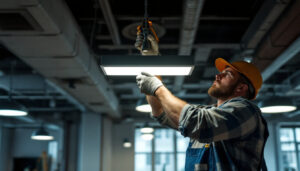
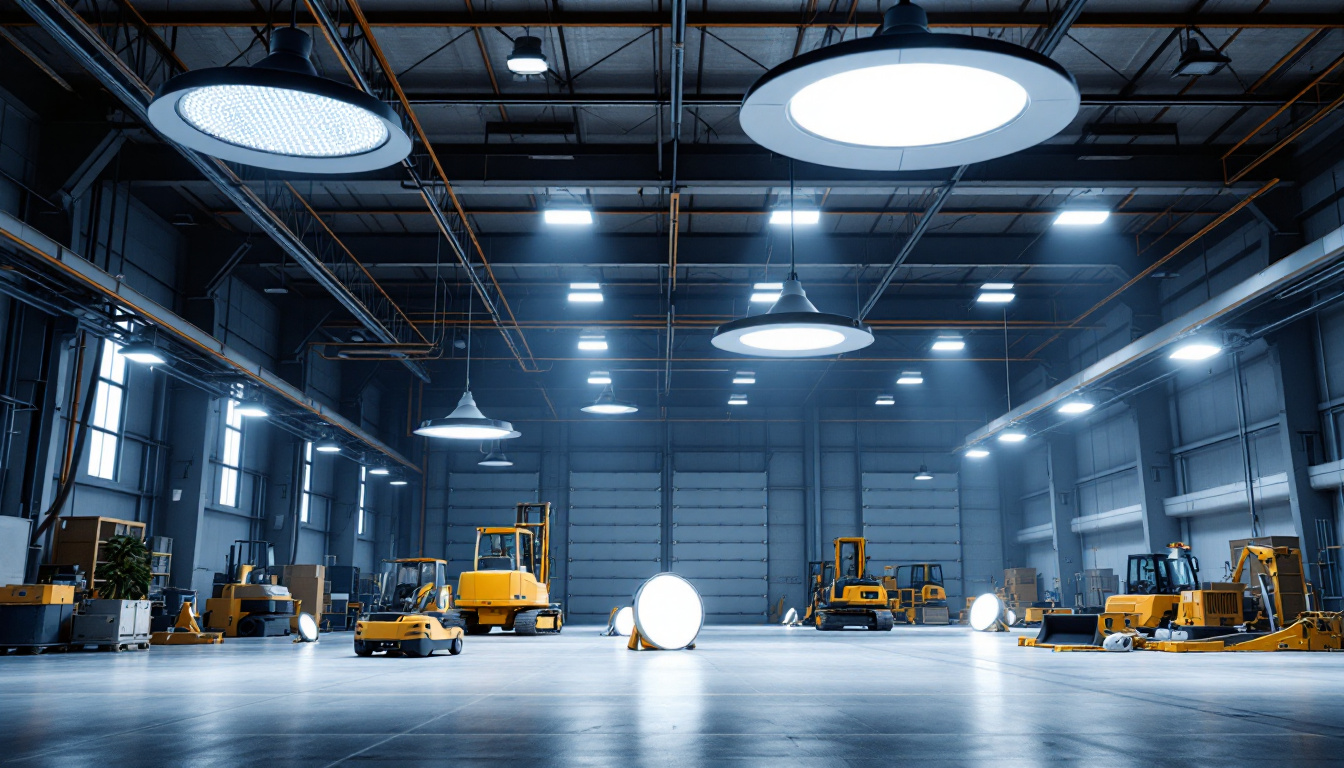
High bay lighting represents a significant segment of the commercial and industrial lighting market, offering unique challenges and opportunities for lighting contractors. With ceiling heights typically above 20 feet, high bay applications demand specialized knowledge of fixture types, mounting considerations, and performance metrics to ensure optimal illumination. As energy efficiency standards continue to evolve and LED technology advances, staying current with high bay lighting solutions has become essential for contractors looking to deliver value to their clients.
This comprehensive guide explores the critical aspects of high bay lighting that every lighting contractor should understand to successfully specify, install, and maintain these systems in warehouses, manufacturing facilities, gymnasiums, and other high-ceiling environments.
High bay lighting is specifically designed for spaces with ceiling heights ranging from 20 to 45 feet. These environments present unique lighting challenges due to their scale and often complex operational requirements. The primary goal in these spaces is to deliver sufficient illumination at the working plane while managing energy consumption and maintenance costs.
Different applications have distinct lighting requirements based on the tasks performed in the space. For instance, a warehouse primarily needs adequate visibility for inventory management and safe navigation, while manufacturing facilities require precise task lighting to support quality control and worker safety. Sports facilities need uniform illumination with minimal glare and often have specific requirements for television broadcasting.
Warehouses and distribution centers typically require uniform illumination throughout large open spaces, with particular attention to aisle ways and picking areas. Light levels generally range from 20-30 footcandles for general storage to 30-50 footcandles for active picking areas. Vertical illumination on shelving is as important as horizontal footcandles on the floor.
Manufacturing facilities present more complex requirements, often needing 50-100 footcandles depending on the precision of work being performed. These environments may also require specialized lighting for quality inspection areas or machine-specific illumination. Color rendering is particularly important in manufacturing settings where color discrimination affects product quality.
Sports facilities such as gymnasiums, indoor pools, and ice rinks have unique considerations including glare control, impact resistance, and often the need for multiple lighting scenes for different activities. These spaces typically require 30-100 footcandles depending on the level of competition, with professional venues needing significantly higher light levels to support broadcasting requirements.
The mounting height fundamentally affects fixture selection and layout. Spaces with 20-25 foot ceilings may be adequately served by lower-wattage fixtures with medium distribution patterns, while facilities with 30-45 foot ceilings require higher-output fixtures with specialized optics to deliver light efficiently to the working plane.
As ceiling height increases, the potential for glare also increases, making proper shielding and light distribution critical factors in fixture selection. Additionally, higher mounting heights typically require higher lumen output fixtures, which impacts energy consumption and potentially cooling loads within the space.
The high bay lighting market has evolved dramatically with the widespread adoption of LED technology. While traditional HID and fluorescent systems still exist in many facilities, LED has become the dominant technology for new installations and retrofits due to its efficiency, longevity, and control capabilities.
Understanding the strengths and limitations of each technology allows contractors to make appropriate recommendations based on client requirements, budget constraints, and facility characteristics.
LED high bay fixtures come in various form factors, including linear, round, and rectangular configurations. Linear high bays are particularly effective for aisle ways and rectangular spaces, providing directional light distribution that can be optimized for specific layouts. Round high bays, often called “UFO” style fixtures, typically offer more symmetrical distribution patterns suitable for open areas.
The efficacy of modern LED high bays typically ranges from 130-180 lumens per watt, representing a significant improvement over legacy technologies. This efficiency translates to lower operating costs and reduced heat load in the space. Most quality LED high bays now offer 100,000+ hour L70 ratings, meaning they maintain at least 70% of their initial light output for that period.
Advanced LED high bays incorporate features such as programmable drivers, onboard sensors, and wireless connectivity options that enable integration with building management systems. These features allow for sophisticated control strategies that can further enhance energy savings and operational flexibility.
Metal halide fixtures, once the standard for high bay applications, typically deliver 65-115 lumens per watt and have lamp life ratings of 10,000-20,000 hours. Their primary disadvantages include slow startup and restrike times, poor lumen maintenance, and limited control capabilities. However, some facilities still utilize these systems due to their relatively low initial cost.
T5HO and T8 fluorescent high bays offer better efficiency than metal halide (80-100 lumens per watt) with improved control capabilities and instant-on performance. These systems typically feature multiple lamps in reflective assemblies and can be an economical option for spaces with moderate ceiling heights (20-30 feet). Their primary limitations include temperature sensitivity and more frequent maintenance requirements compared to LED solutions.
When specifying high bay lighting, contractors must consider several key performance metrics beyond simple wattage or lumen output. These factors determine how effectively the lighting system will perform in the specific application and impact long-term client satisfaction.
Understanding these metrics allows contractors to make meaningful comparisons between products and ensure the selected solution will meet the operational requirements of the facility.
The distribution pattern of a high bay fixture significantly impacts its performance in a given space. Narrow distributions (typically 60-90 degrees) concentrate light downward and are ideal for higher mounting heights or narrow aisles. Medium distributions (90-120 degrees) provide a balance of downlight and wider coverage, suitable for general open areas. Wide distributions (120+ degrees) spread light over broader areas and can reduce the number of fixtures needed but may increase glare at certain viewing angles.
Many manufacturers provide IES files that allow contractors to model different distribution patterns in lighting design software. This capability enables precise fixture placement and quantity calculations to achieve target illuminance levels while optimizing energy usage.
Fixture efficacy, measured in lumens per watt, directly impacts energy consumption and operating costs. Modern LED high bays should deliver at least 130 lumens per watt, with premium products exceeding 160 lumens per watt. This metric becomes particularly important in facilities with extended operating hours where energy savings can quickly offset higher initial equipment costs.
Beyond raw efficacy, contractors should consider how effectively the fixture delivers light to the working plane. A fixture with excellent optical efficiency may outperform a higher-efficacy fixture with poor optics in terms of actual application efficiency. This concept of “delivered lumens” versus “fixture lumens” is critical when comparing options.
The accessibility of high bay fixtures makes maintenance considerations particularly important. LED fixtures with 100,000+ hour ratings significantly reduce lamp replacement requirements compared to HID or fluorescent alternatives. However, contractors should evaluate the serviceability of different fixture designs, particularly how driver components can be accessed and replaced.
Environmental factors such as ambient temperature, dust levels, and vibration can significantly impact fixture longevity. Fixtures with robust thermal management, appropriate IP ratings, and vibration resistance should be specified for challenging environments. Some manufacturers offer modular designs that allow for easier component replacement without removing the entire fixture.
Lighting controls represent one of the most significant opportunities for energy savings and operational improvements in high bay applications. Modern control systems can reduce energy consumption by 40-70% beyond the savings achieved by simply upgrading to more efficient fixtures.
Contractors who can effectively specify and implement control strategies provide substantial added value to their clients while differentiating themselves in the marketplace.
Occupancy-based controls are particularly effective in warehouses and other spaces with intermittent usage patterns. High-mounted sensors with appropriate coverage patterns can detect movement in aisles and open areas, automatically dimming or turning off lights in unoccupied zones. Advanced systems incorporate “high-end trim” that sets maximum light levels at 80-90% of full output – a reduction typically unnoticeable to occupants that yields significant energy savings.
Daylight harvesting leverages natural light from skylights or clerestory windows to reduce artificial lighting when sufficient ambient light is available. This strategy is especially effective in perimeter areas and spaces with significant roof fenestration. Photosensors can be integrated directly into fixtures or mounted separately to control zones based on available daylight.
Networked control systems enable more sophisticated strategies including task tuning, scheduling, and demand response capabilities. These systems can integrate with building management platforms to coordinate lighting with HVAC and other building systems. The ability to collect and analyze usage data helps facility managers optimize operations and identify additional efficiency opportunities.
Wireless mesh networks have become increasingly popular for high bay applications as they eliminate the need for control wiring – a significant cost factor in high-ceiling environments. These systems allow for flexible zoning and reconfiguration without physical rewiring, an important consideration for dynamic spaces like warehouses where layouts may change over time.
The installation process for high bay lighting presents unique challenges due to ceiling heights and often complex mounting conditions. Proper planning and understanding of these challenges can prevent costly delays and ensure safe, efficient installations.
Retrofit projects require additional considerations regarding existing infrastructure, potential asbestos concerns in older facilities, and minimizing disruption to ongoing operations.
High bay fixtures can be mounted using various methods including pendant, chain, surface, and hook options. The structural integrity of mounting points must be carefully evaluated, particularly when retrofitting heavier legacy fixtures with lighter LED alternatives that may require adapter plates or new mounting hardware.
Working at height requires specialized equipment and safety protocols. Contractors should develop comprehensive installation plans that address access requirements, fall protection, and fixture handling procedures. In active facilities, additional safety measures may be needed to protect personnel and equipment below the work area.
Power distribution represents another critical consideration, particularly in retrofit scenarios where existing circuit capacity may be leveraged to support additional fixtures due to the lower power requirements of LED technology. Proper circuit mapping and load calculations are essential to prevent overloading and ensure code compliance.
Proper commissioning ensures that lighting systems perform as designed and deliver expected energy savings. This process includes verifying fixture aiming, confirming control system operation, and measuring actual light levels against design targets. For networked systems, commissioning also involves programming schedules, sensor settings, and establishing user interfaces.
Post-installation optimization provides an opportunity to fine-tune the system based on actual usage patterns and occupant feedback. This might include adjusting sensor sensitivity, refining control zones, or modifying light levels in specific areas. Documenting these adjustments and providing clear operational guidance to facility staff helps ensure long-term performance and client satisfaction.
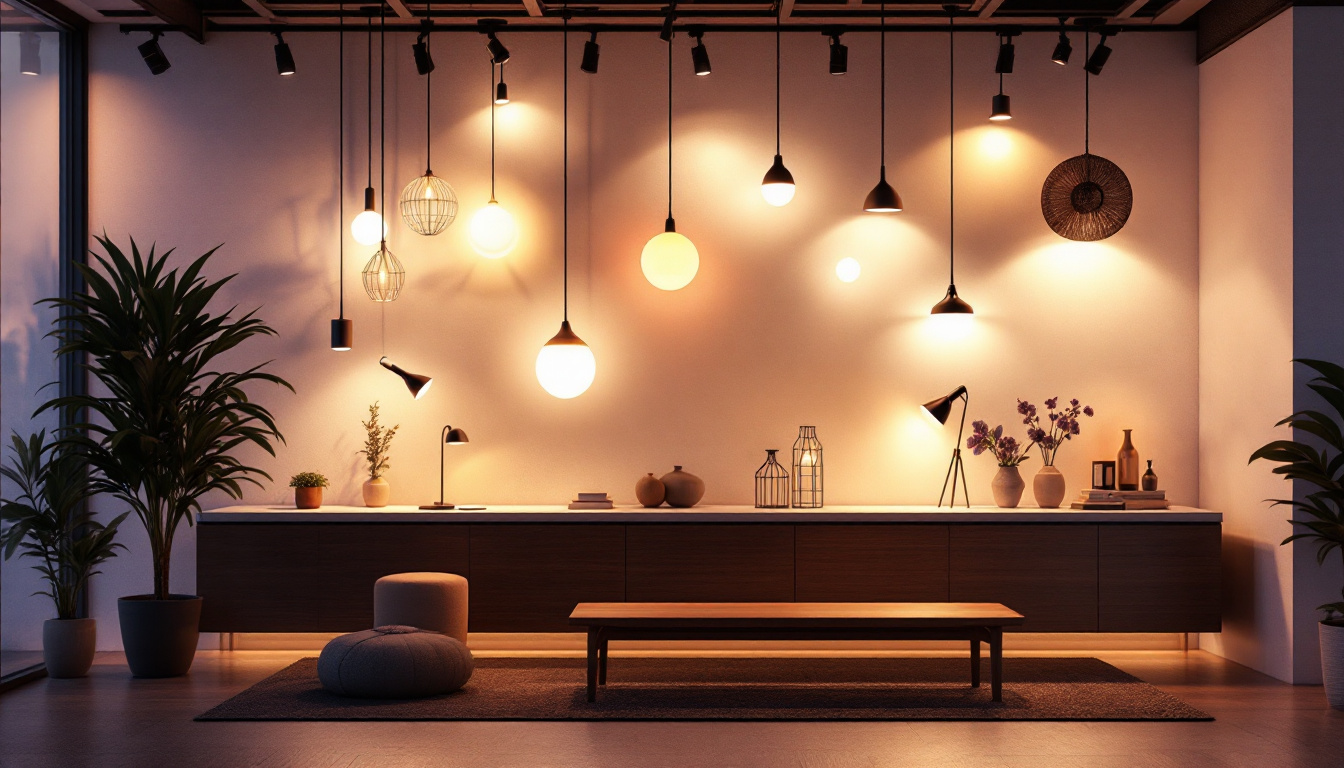
Discover the latest trends in build lighting that every contractor needs to stay ahead in the industry.
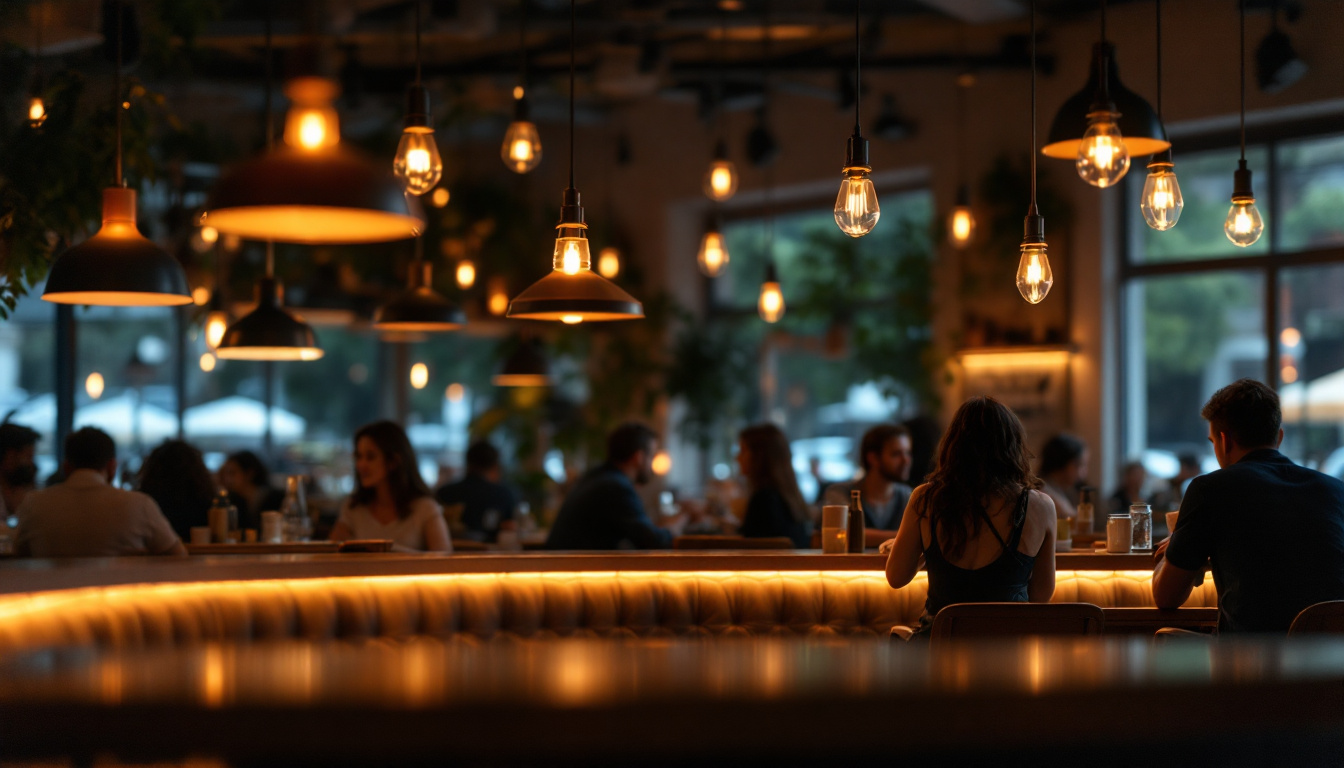
Discover the key elements of cafe lighting that every contractor should know.
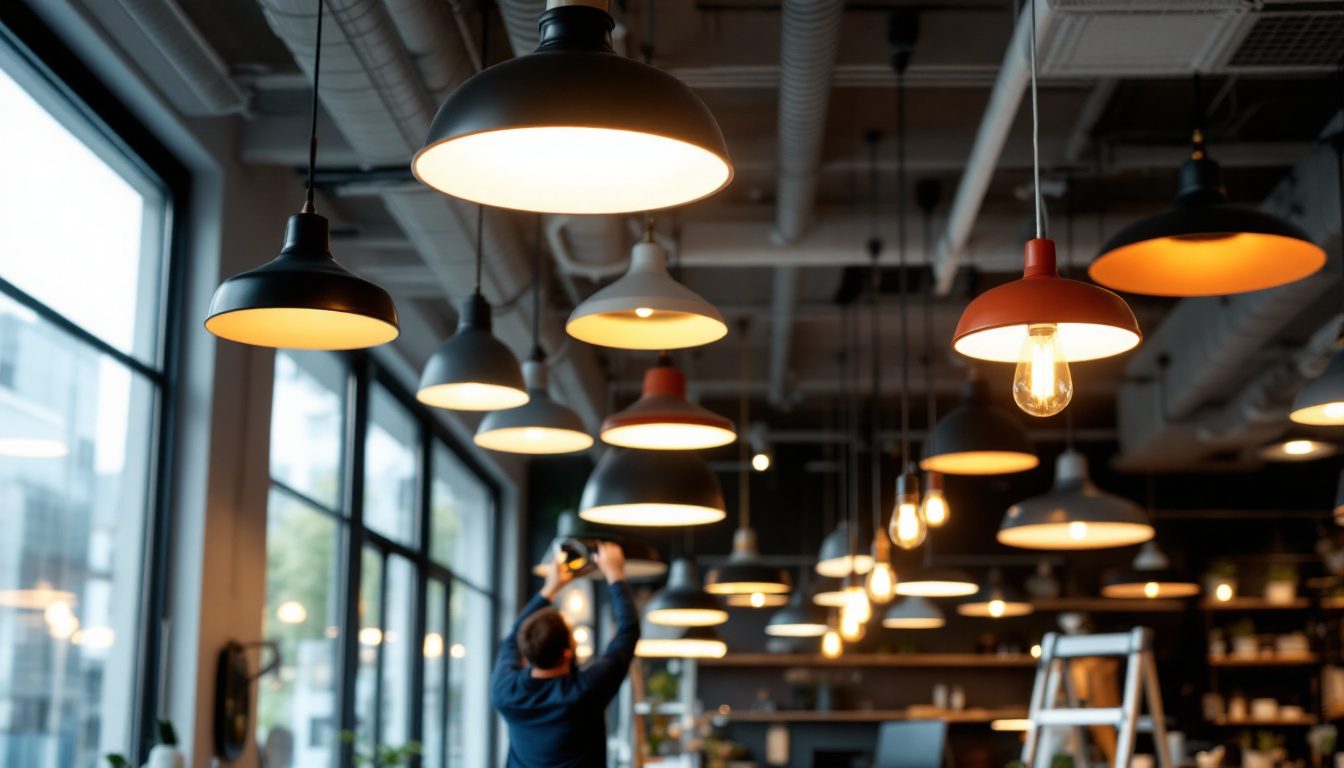
Discover why lighting contractors should prioritize commercial hanging LED lights in their projects.
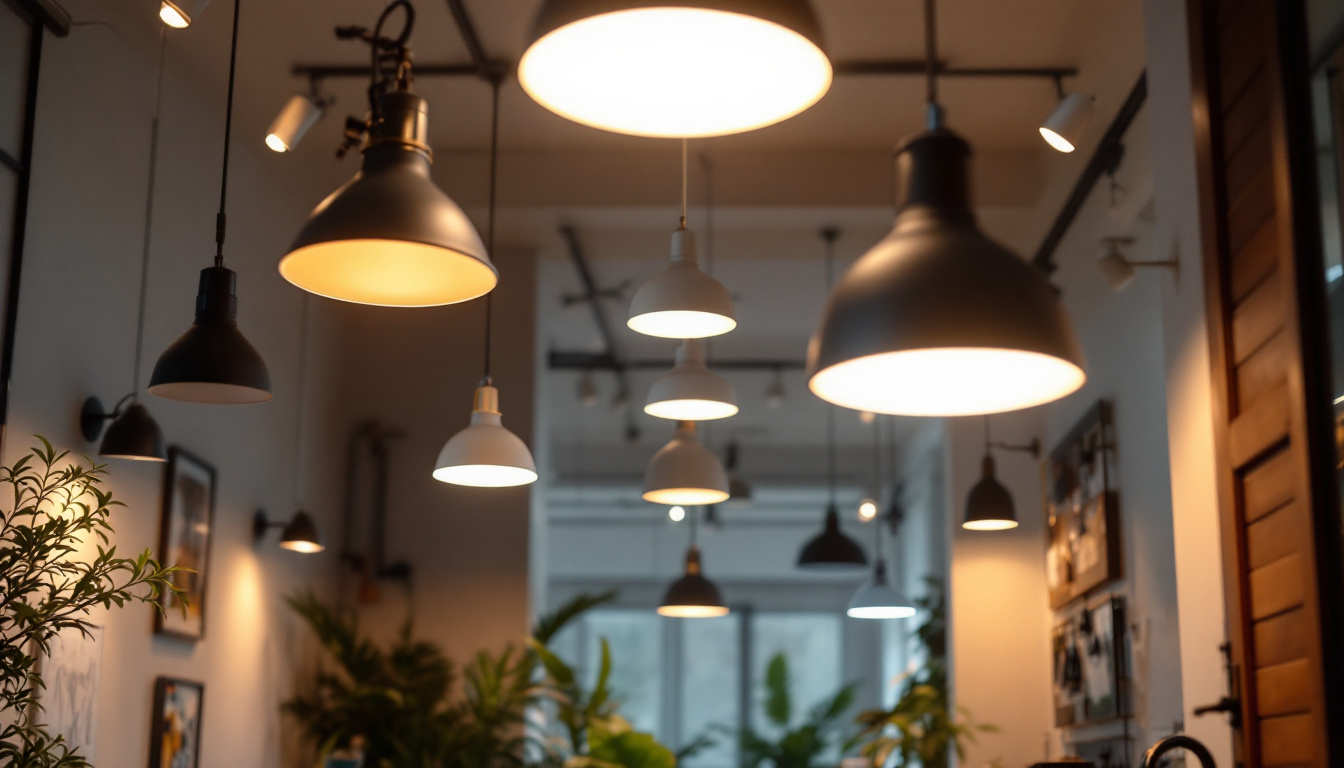
Discover essential tips from a seasoned lighting contractor on selecting the perfect LED light fixtures.
Get notified when NEW deals are released.
Optimize your budget with wholesale discounts.
Only top-quality, specification-grade lighting products.
No additional costs at checkout - what you see is what you pay.
We understand the unique needs of contractors.